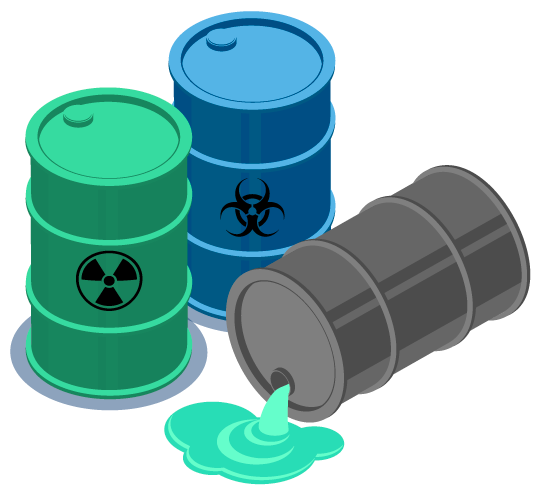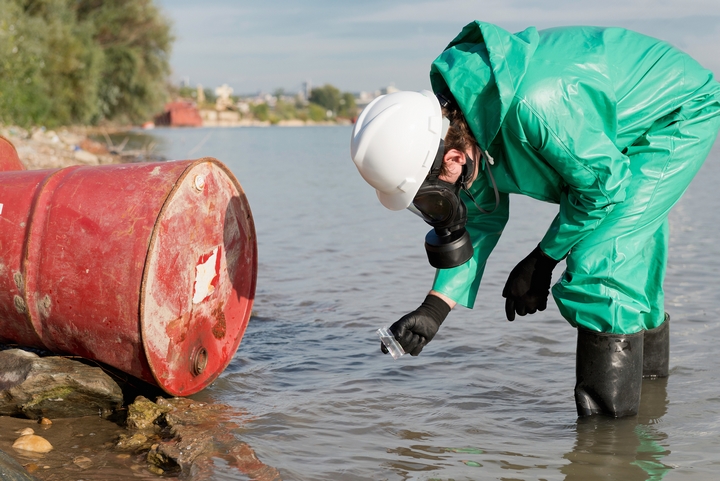Industrial Wastewater Treatment: Custom Solutions for Complicated Wastewater Obstacles
Industrial Wastewater Treatment: Custom Solutions for Complicated Wastewater Obstacles
Blog Article
Exactly How Liquid Waste Disposal Functions: A Thorough Summary of Methods and Technologies Used

Summary of Liquid Waste Kind
The complexity of liquid waste types necessitates a detailed understanding of their qualities and effects for disposal. Fluid waste can extensively be categorized right into several kinds, including commercial, metropolitan, farming, and dangerous waste. Each group exhibits unique residential or commercial properties, needing particular management strategies to mitigate ecological and wellness dangers.
Industrial liquid waste originates from producing processes and typically consists of a variety of pollutants, such as heavy metals, solvents, and organic compounds. Municipal liquid waste, mainly comprising wastewater from households and business establishments, has raw material, nutrients, and virus (industrial wastewater treatment). Agricultural fluid waste, consisting of drainage from ranches, may contain fertilizers, pesticides, and pet waste, posturing dangers to water high quality and communities
Harmful liquid waste is identified by its poisoning, sensitivity, or potential to trigger damage. This category consists of compounds like acids, bases, and particular chemicals that necessitate rigorous handling and disposal methods. Comprehending these diverse fluid waste types is important for establishing reliable disposal methods and making certain compliance with environmental policies. Appropriate category and characterization are vital for applying suitable therapy techniques and decreasing the unfavorable effects on public health and the environment.
Physical Treatment Techniques

Screening is the initial step, where larger fragments and particles are eliminated from the liquid waste utilizing displays or grates. In sedimentation tanks, heavier particles resolve at the bottom, developing a sludge layer, while the clarified liquid can be additional treated.
Filtration is one more crucial method that involves passing the liquid via permeable materials, such as sand or membrane layers, to record smaller particles. This action improves the quality of the fluid, making it appropriate for succeeding treatment processes.

Chemical Treatment Techniques
Chemical treatment strategies are vital for properly handling liquid waste, especially in attending to dissolved and colloidal pollutants that physical techniques may not properly remove. These strategies utilize numerous chemical representatives to counteract, precipitate, or change harmful compounds right into much less damaging forms.
One common method is coagulation and flocculation, where chemicals such as alum or ferric chloride are added to advertise the gathering of suspended fragments. This process enhances sedimentation, permitting much easier removal of the resulting sludge. Furthermore, oxidation processes, employing agents like chlorine or ozone, are employed to break down intricate organic compounds and pathogens, making the waste more secure for discharge or further therapy.
Neutralization is one more crucial method, which adjusts the pH of acidic or alkaline waste streams to neutral degrees, protecting against possible damage to downstream systems and the atmosphere. In addition, progressed oxidation procedures (AOPs) make use of mixes of oxidants and ultraviolet light to weaken relentless contaminants, achieving a higher level of therapy efficiency.
Organic Therapy Processes
Biological treatment procedures play a vital function in the monitoring of liquid waste by utilizing bacteria to decay natural matter and lower pollutant degrees. These procedures can be broadly categorized into cardio and anaerobic therapies, each employing particular microbial communities to attain efficient waste degradation.
Aerobic therapy entails making use of oxygen to assist in the malfunction of organic materials by bacteria. This process is commonly executed in activated sludge systems, where aeration storage tanks give a helpful atmosphere for microbial growth, resulting in the oxidation of organic contaminants. The resultant biomass can be separated from dealt with effluent through sedimentation.
In contrast, anaerobic treatment happens in the absence of oxygen, relying upon different microorganisms to damage down natural matter. This technique is especially beneficial for high-strength waste, as it produces biogas, an eco-friendly energy source, while lowering sludge production. Technologies such as anaerobic digesters are often used in commercial and local applications.
Both cardiovascular and anaerobic biological treatments not just reduce the environmental influence of liquid waste however likewise facilitate source recovery, making them necessary parts of sustainable waste monitoring techniques. Their effectiveness, performance, and adaptability support their widespread implementation across different sectors.
Arising Technologies in Disposal
Ingenious approaches to fluid waste disposal are rapidly progressing, driven by advancements in innovation and a boosting focus on sustainability. Amongst these emerging technologies, membrane layer bioreactors (MBRs) have actually acquired grip for their ability to look here combine organic treatment with membrane recommended you read layer purification, causing premium effluent that can be reused in numerous applications. MBRs allow smaller footprints and a lot more effective operations compared to traditional systems.
One more encouraging development is using anaerobic food digestion combined with nutrient recuperation modern technologies, which not only treats fluid waste yet additionally generates biogas and recoups useful nutrients like nitrogen and phosphorus. This double benefit improves source effectiveness and reduces ecological effect.
Additionally, advanced oxidation processes (AOPs) are being embraced for the deterioration of complex organic contaminants. These methods use powerful oxidants and drivers to break down pollutants at the molecular level, offering a highly effective service for tough waste streams.
In addition, the assimilation of expert system and equipment knowing in waste monitoring systems is maximizing operational performance and predictive maintenance, leading to lowered prices and improved environmental compliance. These technologies mirror a considerable shift towards more sustainable and reliable fluid waste disposal techniques.
Final Thought
To conclude, reliable liquid garbage disposal demands a thorough understanding of various techniques and innovations. The combination of physical, chemical, and organic therapy methods makes certain the reliable administration of varied waste kinds. Moreover, the introduction of innovative modern technologies enhances treatment effectiveness and advertises sustainability in waste administration methods. By constantly progressing these methods, it becomes feasible to resolve the growing obstacles linked with liquid waste, inevitably contributing to ecological protection and source recovery.
Liquid waste disposal is a crucial element of ecological monitoring, needing a thorough understanding of numerous strategies and innovations customized to different waste kinds. Liquid waste can broadly be classified into numerous kinds, consisting of industrial, community, farming, and hazardous waste. Agricultural liquid waste, consisting of drainage from farms, may have fertilizers, chemicals, and animal waste, presenting risks to water top quality and environments.
Various physical treatment methods play a crucial function in handling fluid waste effectively - webpage industrial wastewater treatment.In verdict, effective liquid waste disposal requires a comprehensive understanding of numerous methods and modern technologies
Report this page